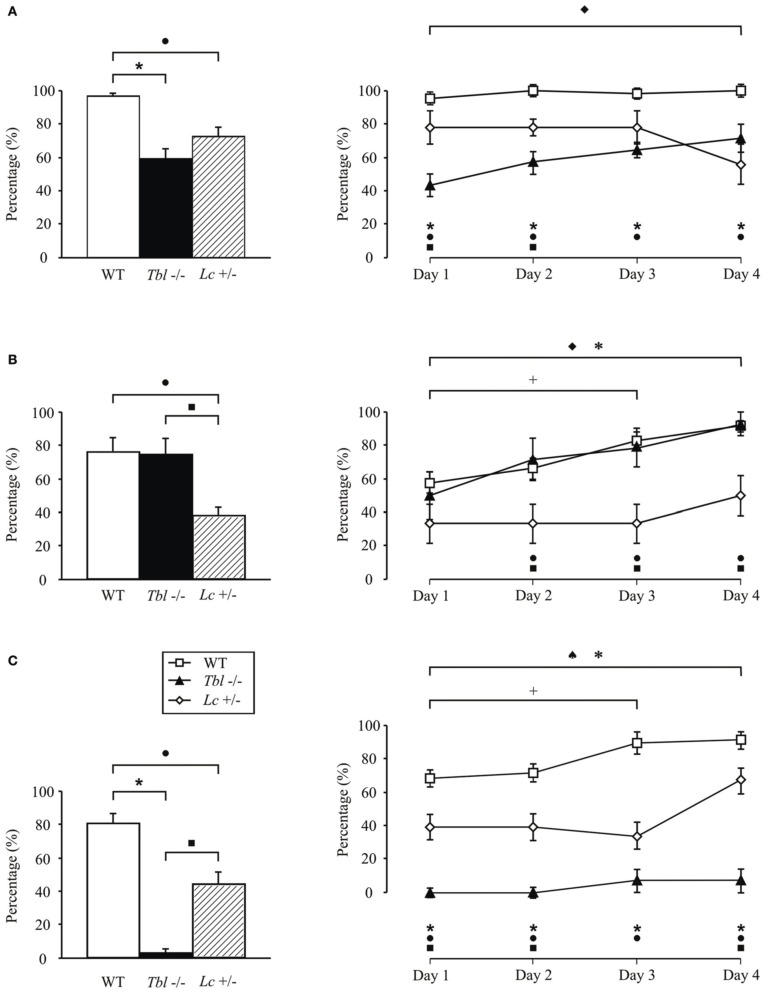Figure 1.
Comparison of motor activity and motor learning in tambaleante (tbl−/−), Lurcher (Lc/+), and wild-type (WT) mice evaluated in various motor tasks: fall (A), horizontal bar (B), and vertical pole (C) performed twice a day during 4 days. Significant differences were found between groups in the percentage (%) mean values (left) [One-Way ANOVA F-test, F(6, 1158) = 17.50 (fall); F(6, 1158) = 8.45 (horizontal bar); F(6, 1158) = 45.28 (vertical pole), P < 0.05] as well as in the temporal evolution for each of the tests (right). [Two-Way ANOVA F-test, F(4, 360) = 2.41 (fall); F(4, 360) = 0.56 (horizontal bar); F(4, 360) = 1.62 (vertical pole), P < 0.05]. ♦, significant differences between tambaleante mice; +, between different sessions of wild-type animals; ♠, between Lurcher mice; *, between tambaleante and wild-type mice; ■, between tambaleante and Lurcher animals; and •, between Lurcher and wild-type mice. Lurcher mice data collected from Porras-García et al. (2005).

